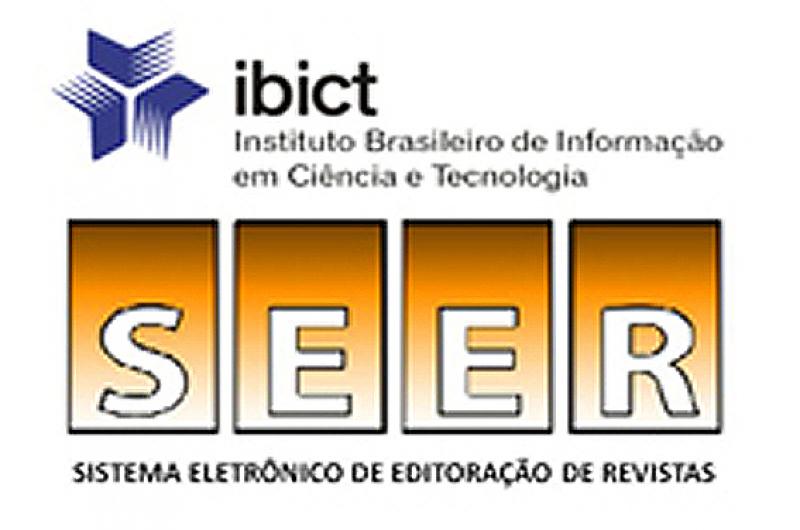Application of conservation and stabilization methods for shelf life extention of Melipona subnitida honey
Visualizações: 48DOI :
https://doi.org/10.31416/rsdv.v13i3.1090Mots-clés :
Cooling, Dehumidification, Pasteurization, StabilizationRésumé
Honey produced by Melipona subnitida has a high moisture content and is susceptible to deterioration process, requiring greater care in its conservation or aplication or conservation methods. Thus, in this work, we tested the effect of dehumidifying carried out in refrigerator, microbiological stabilization carried out in bacteriological incubator, cooling in refrigerator and pasteurization at different temperatures on conservation of physicochemical and microbiological characteristics of Melipona subnitida bee honey. In the end, we concluded that only treatments with heating were effective in reducing microorganisms numbers, but cooling and dehumidification treatments are viable alternatives for conservation of honey in good microbiological condition.
Références
ALVES, T. T. L.; et al. Caracterização físico-química e avaliação microbiológica de méis de abelhas nativas do nordeste brasileiro. Revista Verde de Agroecologia e Desenvolvimento Sustentável, [S. l.], v. 6, n. 3, p. 91–97, 2011. Available in: https://www.gvaa.com.br/revista/index.php/RVADS/article/view/735. Access at: 6 may. 2024.
AOAC. Official methods of analysis of the Association of Official Analytical Chemists International. 18th edn. Gaithersburg, International, 2011.
APHA. Compendium of Methods for the Microbiological Examination of Foods. 4th edn. APHA, Washington, 2013.
ARAÚJO, J. M. A. Química de Alimentos: Teoria e Prática, 5th edn. Editora UFV, Viçosa, MG, 2012.
BEZERRA, M. L. R.; et al. Effects of honey from Mimosa quadrivalvis L. (malícia) produced by the Melipona subnitida D. (jandaíra) stingless bee on dyslipidaemic rats. Food Funct, v.9, p.4480-4492, 2018. Available in: https://pubs.rsc.org/en/content/articlelanding/2018/fo/c8fo01044g#!divAbstract. Access at: 06 may. 2024.
BRASIL. Inspeção industrial e sanitária de produtos de origem animal. Ministério da Agricultura, Pecuária e Abastecimento, Brasília, 2017.
BRASIL. Instrução Normativa MAPA nº 11, de 20 de outubro de 2000. Regulamento técnico de identidade e qualidade do mel. Diário Oficial da União: Seção I, Brasília, DF, p. 1-4.
BRASIL. Manual de Métodos Oficiais para Análise de Alimentos de Origem Animal. Ministério da Agricultura, Pecuária e Abastecimento, Brasília, 2022.
CARDONA, Y.; TORRES, A.; HOFFMANN, W. Colombian stingless bee honeys characterized by multivariate analysis of physicochemical properties. Apidologie, v.50, p. 881-892. Available in:https://link.springer.com/article/10.1007/s13592-019-00698-5.Access at: 6 may. 2024.
CAVIA, M. M.; et al. Evolution of acidity of honeys from continental climates: Influence of induced granulation. Food Chemistry, v. 100, p. 1728-1733, 2007. Available in: https://www.sciencedirect.com/science/article/pii/S0308814605009179. Access at: 06 may. 2024.
DA SILVA, T. M. G.; et al. Análises químicas e potencial antioxidante do mel de Angico produzido pelas Abelhas Sem-Ferrão Jandaíra. Revista Virtual de Química, v. 6, n. 5, p. 1370-1379, 2014. Available in: https://rvq-sub.sbq.org.br/index.php/rvq/article/view/748. Access at: 06 may. 2024.
DE ALMEIDA-MURADIAN, L. B.; STRAMM, K. M.; ESTEVINHO, L. M. Efficiency of the FT-IR ATR spectrometry for the prediction of the physicochemical characteristics of Melipona subnitida honey and study of the temperature’s effect on those properties. International Journal of Food Science & Technology, v. 49, p. 188-195, 2014. Available in: https://repositorio.usp.br/item/002455232. Access at: 06 may. 2024.
ESCUDER-VIECO, D.; et al. High-temperature short-time pasteurization system for donor milk in a human milk bank setting. Frontiers Microbioly, v. 9, article 926, 2018. Available in: https://www.frontiersin.org/journals/microbiology/articles/10.3389/fmicb.2018.00926/full. Access at: 06 may. 2024.
FAO. Codex Alimentarius: Food Labelling Complete Texts. Food and Agriculture Organization Of The United Nations Word Health Organization, USA Revised 2001.
FERNANDES, R. T.; ROSA, I. G.; CONTI-SILVA, A. C. Microbiological and physical-chemical characteristics of honeys from the bee Melipona fasciculata produced in two regions of Brazil. Ciência Rural, v. 48, n. 5, 2018. Available in: https://www.scielo.br/j/cr/a/8qKwXW5D93Ch6D7LDHtxZYv/#. Access at: 06 may. 2024.
FRANCISQUINI, J. D’A.; et al. Reação de Maillard: Uma revisão. Revista do Instituto de Laticínios Cândido Tostes, v. 72, n. 1, p. 48-57, 2017. Available in: https://www.revistadoilct.com.br/rilct/article/view/541/430. Access at: 06 may. 2024.
GILLIAM, M.; PREST, D. B.; LORENZ, B. J. Microbiology of pollen and bee bread: taxonomy and enzymology of molds. Apidologie, v. 20, n. 1, p. 53–68, 1989. Available in: https://hal.science/hal-00890763/document. Access at: 06 may. 2024.
GOMES, S.; et al. Physicochemical, microbiological and antimicrobial properties of commercial honeys from Portugal. Food and Chemical Toxicology, v. 48, p. 544–548, 2009. Available in: https://www.sciencedirect.com/science/article/pii/S0278691509005456. Access at: 06 may. 2024.
GRABOWSKI, N. T.; KLEIN, G. Microbiology and foodborne pathogens in honey. Critical Reviews in Food Science and Nutrition, v.57, n.9, p. 1852-1892, 2017. Available in: https://www.tandfonline.com/doi/full/10.1080/10408398.2015.1029041?scroll=top&needAccess=true. Access at: 06 may. 2024.
HILBE, J. STATISTICA 7: An overview. The American Statistician, v. 61, p. 91-94, 2007. Available in: https://www.researchgate.net/publication/4741417_STATISTICA_7_An_overview. Access at: 06 may. 2024.
HINZE, H.; HOLZER, H. Effect of sulfite or nitrite on the ATP content and the carbohydrate metabolism in yeast. Journal of Food Investigation and Research, v. 181, n.2, p.87-91, 1985. Available in: https://link.springer.com/article/10.1007/BF01042566. Access at: 06 may. 2024.
JAY, J. M. Microbiologia de Alimentos. 6. ed. Artmed, 2005. 712p.
LIRA, A. F.; et al. Estudo comparativo do mel de Apis mellifera com méis de meliponíneos. Acta Veterinária Brasilica, v.8, n.3, p.169-178, 2014. Available in: https://www.academia.edu/78709287/ESTUDO_COMPARATIVO_DO_MEL_DE_Apis_mellifera_COM_M%C3%89IS_DE_MELIPON%C3%8DNEOS_DE_DIFERENTES_REGI%C3%95ES. Access at: 06 may. 2024.
MADIGAN, M. T.; et al. Microbiologia de Brock. 14. ed. Artmed, 2016. 1032 p.
NOZAL, M. J.; et al. High-performance liquid chromatographic determination of methyl anthranilate, hydroxymethylfurfural and related compounds in honey. Journal of Chromatography A, v. 917, p. 95-103, 2001. Available in: https://www.sciencedirect.com/science/article/pii/S0021967301007026?via%3Dihub. Access at: 06 may. 2024.
RAMALHOSA, E.; et al. Mead production: Tradition versus modernity. Advances in Food and Nutrition Research, v. 63, p. 111–118, 2011. Available in: https://www.sciencedirect.com/science/article/abs/pii/B978012384927400004X?via%3Dihub.Access at: 06 may. 2024.
SILVA, M. G.; et al. Teor de umidade e potencial hidrogeniônico do mel de abelha Jandaíra produzido em Sousa, Paraíba. Revista Brasileira de Gestão Ambiental, [S. l.], v. 12, n. 4, p. 07–12, 2018. Available in: https://www.gvaa.com.br/revista/index.php/RBGA/article/view/6183. Access at: 6 may. 2024.
SILVA, M. S.; et al. Selection of yeasts from bee products for alcoholic beverage production. Brazilian Journal of Microbiology, vol. 51, n. 1, p. 323-334, 2020. Available in: https://www.ncbi.nlm.nih.gov/pmc/articles/PMC7058816/. Access at: 6 may. 2024.
SILVA, M. S.; et al. Microrganisms in honey. In: Honey analyses. InTech, London, p 233–258, 2017. Available in: https://www.researchgate.net/publication/315374793_Microorganisms_in_Honey. Access at: 7 may. 2024.
SILVA, T. M. S.; et al. Phenolic compounds, melissopalynological, physicochemical analysis and antioxidant activity of Jandaíra (Melipona subnitida) honey. Journal of Food Composition and Analisys, v. 29, p. 10-18, 2013. Available in: https://www.sciencedirect.com/science/article/pii/S0889157512001640. Access at: 7 may. 2024.
SODRÉ, G. S.; et al. Perfil sensorial e aceitabilidade de méis de abelhas sem ferrão submetidos a processos de conservação. Ciência e Tecnologia de Alimentos, v. 28, p. 72–77, dez. 2008. Available in: https://www.scielo.br/j/cta/a/7PrXgpSzGHMJRd8PcSQBSXK/?lang=pt#. Access at: 7 may. 2024.
SOUSA, J. M. B.; et al. Aspectos físico-químicos e perfil sensorial de méis de abelhas sem ferrão da região do Seridó, Estado do Rio Grande do Norte, Brasil. Semina: Ciências Agrárias, vol. 34, no. 4, p.1765-1774, 2013. Available in: https://www.scielo.br/j/cta/a/7PrXgpSzGHMJRd8PcSQBSXK/?lang=pt#. Access at: 7 may. 2024.
VILLAS-BOAS, J. K.; MALASPINA, O. Parâmetros físico-químicos propostos para controle de qualidade do mel de abelhas indígenas sem ferrão no Brasil. Mensagem Doce, São Paulo, n. 82, p. 6-16, 2005. Available in:https://biblioteca.epagri.sc.gov.br/consulta/busca?b=ad&id=39183&biblioteca=vazio&busca=(autoria:%22MALASPINA,%20O.%22)&qFacets=(autoria:%22MALASPINA,%20O.%22)&sort=&paginacao=t&paginaAtual=1. Access at: 7 may. 2024.
Téléchargements
Publiée
Comment citer
Numéro
Rubrique
Licence
© Revista Semiárido De Visu 2025

Ce travail est disponible sous la licence Creative Commons Attribution 4.0 International .















